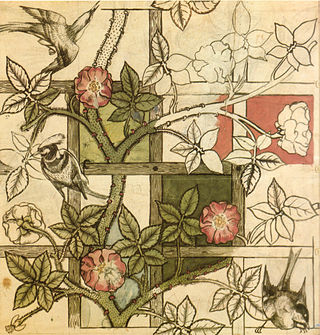
The Arts and Crafts movement was an international trend in the decorative and fine arts that developed earliest and most fully in the British Isles and subsequently spread across the British Empire and to the rest of Europe and America.

Herbert Percy Horne was an English poet, architect, typographer and designer, art historian and antiquarian. He was an associate of the Rhymers' Club in London. He edited the magazines The Century Guild Hobby Horse and The Hobby Horse for the Century Guild of Artists, which he founded with fellow architect Arthur Heygate Mackmurdo in 1882.

The decorative arts are arts or crafts whose object is the design and manufacture of objects that are both beautiful and functional. It includes most of the arts making objects for the interiors of buildings, and interior design, but not usually architecture. ceramic art, metalwork, furniture, jewellery, fashion, various forms of the textile arts and glassware are major groupings.

Selwyn Image was a British artist, designer, writer and poet associated with the Arts and Crafts Movement. He designed stained-glass windows, furniture, embroidery, and was an illustrator of books. Image was the seventh Slade Professor of Fine Art at Oxford from 1910 to 1916.
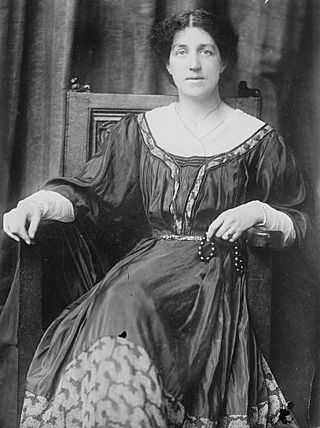
Mary "May" Morris was an English artisan, embroidery designer, jeweller, socialist, and editor. She was the younger daughter of the Pre-Raphaelite artist and designer William Morris and his wife and artists' model, Jane Morris.
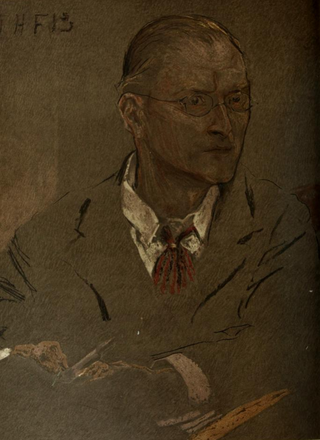
Charles Francis Annesley Voysey was an English architect and furniture and textile designer. Voysey's early work was as a designer of wallpapers, fabrics and furnishings in a Arts and Crafts style and he made important contribution to the Modern Style, and was recognized by the seminal The Studio magazine. He is renowned as the architect of several country houses.
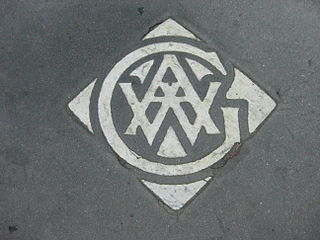
The Art Workers' Guild is an organisation established in 1884 by a group of British painters, sculptors, architects, and designers associated with the ideas of William Morris and the Arts and Crafts movement. The guild promoted the 'unity of all the arts', denying the distinction between fine and applied art. It opposed the professionalisation of architecture – which was promoted by the Royal Institute of British Architects at this time – in the belief that this would inhibit design. In his 1998 book, Introduction to Victorian Style, University of Brighton's David Crowley stated the guild was "the conscientious core of the Arts and Crafts Movement".

Arthur Heygate Mackmurdo was a progressive English architect and designer, who influenced the Arts and Crafts Movement, notably through the Century Guild of Artists, which he set up in partnership with Herbert Horne in 1882. He was the pioneer of the Modern Style and in turn global Art Nouveau movement.

William Richard Lethaby was an English architect and architectural historian whose ideas were highly influential on the late Arts and Crafts and early Modern movements in architecture, and in the fields of conservation and art education.
The Birmingham Group, sometimes called the Birmingham School, was an informal collective of painters and craftsmen associated with the Arts and Crafts Movement, that worked in Birmingham, England in the late 19th and early 20th centuries. All of its members studied or taught at the Birmingham School of Art after the reorganisation of its teaching methods by Edward R. Taylor in the 1880s, and it was the School that formed the group's primary focus. Members of the group also overlapped with other more formal organisations, including the Birmingham Guild of Handicraft, the Ruskin Pottery and the Bromsgrove Guild of Applied Arts.

Christopher Whitworth Whall was a British stained-glass artist who worked from the 1880s and on into the 20th century. He is widely recognised as a leader in the Arts and Crafts movement and a key figure in the modern history of stained glass.

Edward Schroeder Prior (1852–1932) was an architect, instrumental in establishing the arts and crafts movement. He was one of the foremost theorists of the second generation of the movement, writing extensively on architecture, art, craftsmanship and the building process and subsequently influencing the training of many architects.
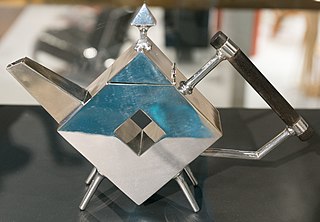
The Anglo-Japanese style developed in the United Kingdom through the Victorian period and early Edwardian period from approximately 1851 to the 1910s, when a new appreciation for Japanese design and culture influenced how designers and craftspeople made British art, especially the decorative arts and architecture of England, covering a vast array of art objects including ceramics, furniture and interior design. Important centres for design included London and Glasgow.

The Modern Style is a style of architecture, art, and design that first emerged in the United Kingdom in the mid-1880s. It is the first Art Nouveau style worldwide, and it represents the evolution of the Arts and Crafts movement which was native to Great Britain. Britain not only provided the base and intellectual background for the Art Nouveau movement, which was adapted by other countries to give birth to local variants; they also played an over-sized role in its dissemination and cultivation through the Liberty department store and The Studio magazine. The most important person in the field of design in general, and architecture in particular, was Charles Rennie Mackintosh. He created one of the key motifs of the movement, now known as the 'Mackintosh rose' or 'Glasgow rose'. The Glasgow School was also of tremendous importance, particularly due to a group closely associated with Mackintosh, known as 'The Four'. The Liberty store nurturing of style gave birth to two metalware lines, Cymric and Tudric, designed by Archibald Knox. In the field of ceramic and glass Christopher Dresser is a standout figure. Not only did he work with the most prominent ceramic manufacturers but became a crucial person behind James Couper & Sons' trademarking of Clutha glass, inspired by ancient Rome, in 1888. Aubrey Beardsley was a defining person in graphic design and drawing, and influenced painting and style in general. In textiles William Morris and C. F. A. Voysey are of huge importance, although most artists were versatile and worked in many mediums and fields, influencing them all to an extent. Because of the natural evolution of Arts and Crafts to Modern Style, lines can be blurred and many designers, artists, and craftsmen worked in both styles simultaneously. Important figures include Charles Robert Ashbee, Walter Crane, Léon-Victor Solon, George Skipper, Charles Harrison Townsend, Arthur Mackmurdo, William James Neatby.

Birmingham has a distinctive culture of art and design that emerged in the 1750s, driven by the historic importance of the applied arts to the city's manufacturing economy. While other early industrial towns such as Manchester and Bradford were based on the manufacture of bulk commodities such as cotton and wool, Birmingham's economy from the 18th century onwards was built on the production of finished manufactured goods for European luxury markets. The sale of these products was dependent on high-quality design, and this resulted in the early growth of an extensive infrastructure for the education of artists and designers and for exhibiting their works, and placed Birmingham at the heart of debate about the role of the visual arts in the emerging industrial society.
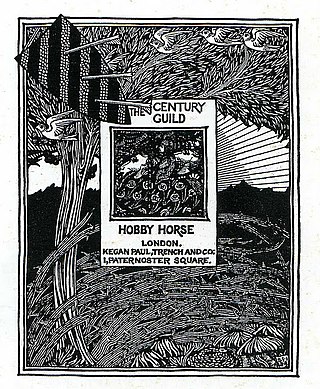
The Hobby Horse was a quarterly Victorian periodical in England published by the Century Guild of Artists. The magazine ran from 1884 to 1894 and spanned a total of seven volumes and 28 issues. It featured various articles not only on arts and design but other subjects including literature and social issues as well. It also featured artwork such as sketches, plates, photographs, engravings, wood cuts, lithographs and reproduced paintings.
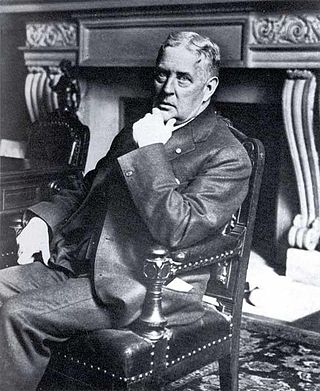
Edmund Charles Tarbell was an American Impressionist painter. A member of the Ten American Painters, his work hangs in the Boston Museum of Fine Arts, Metropolitan Museum of Art, National Gallery of Art, Smithsonian American Art Museum, Corcoran Gallery of Art, DeYoung Museum, National Academy Museum and School, New Britain Museum of American Art, Worcester Art Museum, and numerous other collections. He was a leading member of a group of painters which came to be known as the Boston School.
The 62 Group of Textile Artists is an international group of professional textile artists founded in the United Kingdom in 1962. The group is a Constituted Artists Co-operative, focussed on exhibiting the work of its members in the UK and overseas. Membership of the group is achieved through a selection process. The 62 Group requires members to submit work to a selection panel of their peers for every exhibition "If members fail to submit, or are rejected for three successive exhibitions, then membership is forfeited...a policy which ensures that the group consistently produces exciting work." The increased profile of textile art and its evolution in the latter part of the 20th century "has to a great extent been dictated by members of the 62 Group."

Art Nouveau posters and graphic arts flourished and became an important vehicle of the style, thanks to the new technologies of color lithography and color printing, which allowed the creation of and distribution of the style to a vast audience in Europe, the United States and beyond. Art was no longer confined to art galleries, but could be seen on walls and illustrated magazines.
Joyce Rosemary Himsworth was a British independent designer silversmith. From an early age she worked with her father, the polymath Joseph Beeston Himsworth (1874–1968) making small spoons and items of jewellery. She went on to study at Sheffield College of Arts and Craft, focusing on jewellery manufacture and enamelling. Her undoubted talents were not enough for her to gain a position within the family cutlery firm, B. Worth & Sons.
















